
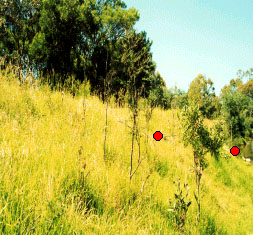
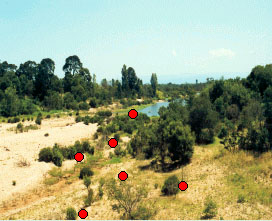
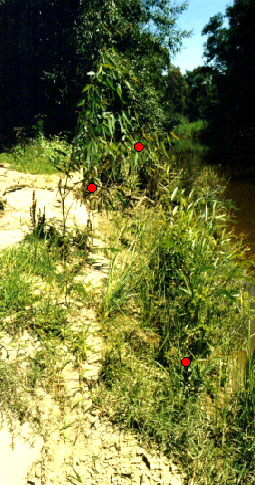
Melissa Parsons, Martin Thoms and Richard Norris
Cooperative Research Centre for Freshwater Ecology
University of Canberra
Monitoring River Health Initiative Technical Report Number 22
Environment Australia, 2002
ISSN 1447-1280
ISBN 0 642 54888 9
| VARIABLE NAME | Riparian zone composition |
| CATEGORY | Riparian vegetation |
| CONTROL OR RESPONSE | Response |
| OFFICE OR FIELD | Field |
| UNITS OF MEASUREMENT | % cover of different riparian components |
| INDICATES | Riparian vegetation is important for lateral stability of the channel and has a direct relationship to many aspects of channel character. |
The riparian zone is defined as the area from the water's edge (under baseflow conditions) to a distance from the bank where the stream still interacts with and influences the type and density of the bank-side vegetation (Nichols et al., 2000).
At each sampling site, identify the riparian zone and visually estimate the percentage area of the riparian zone that is covered by each of the following components:
The percent cover of each of these four vegetation components within the riparian zone is estimated in planview for the left and right banks together, along the entire length of the sampling site. Schematic drawings to assist in determining the relative percent cover of vegetation are provided in Figure 5.14. Because of the 'layering' effect found within the riparian zone (ie. shrubs can grow under trees, grasses can grow under trees etc.), the sum total percent cover of all four vegetation components may be greater than 100%, but must follow two rules:
Both native and exotic species should be included in the assessment of riparian composition. Where known, include a description of the main species present or the main vegetation types present (e.g. native grasses, rainforest, willows, river red gum, tea tree, casuarina, blackberries, paragrass etc.) in each vegetation component.
Variable derived from AusRivAS
1% COVER
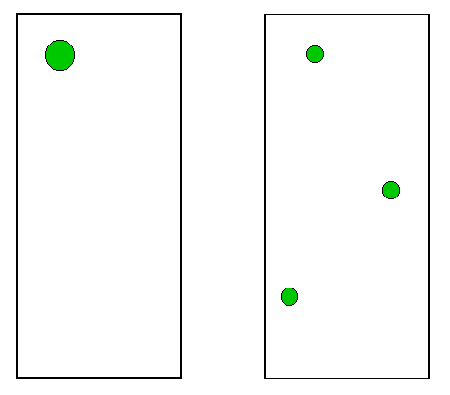
Figure 5.14 Schematic diagrams of 1%, 5%, 10%, 20%, 40%, 60% and 80% vegetative cover within the riparian zone. These schematic diagrams are used in conjunction with the riparian zone composition and native and exotic riparian vegetation variables. Drawings are modified from schematic diagrams presented in White and Ladson (1999), and are reproduced with kind permission of the Department of Natural Resources and Environment, Victoria.
5% COVER

10% COVER
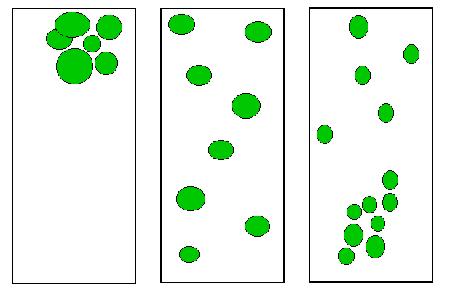
20% COVER

40% COVER
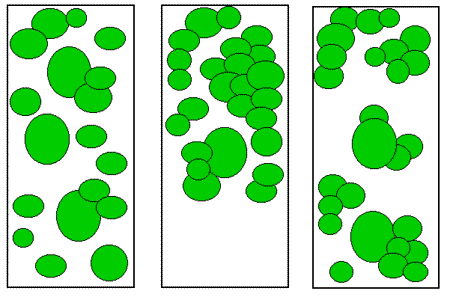
60% COVER

80% COVER

| VARIABLE NAME | Native and exotic riparian vegetation |
| CATEGORY | Riparian vegetation |
| CONTROL OR RESPONSE | Response |
| OFFICE OR FIELD | Field |
| UNITS OF MEASUREMENT | % cover of native and exotic vegetation |
| INDICATES | The relationship between channel character and riparian vegetation changes with a shift from native to exotic vegetation. |
At each sampling site, visually estimate the percent cover of native and exotic riparian vegetation for the left and right banks together, along the entire length of the sampling site. Schematic drawings to assist in determining the relative percent cover of vegetation are provided in Figure 5.14. Percent native vegetation and percent riparian vegetation must total 100%, regardless of the density of the riparian vegetation at the sampling site.
Variable derived from AusRivAS
| VARIABLE NAME | Regeneration of native woody vegetation |
| CATEGORY | Riparian vegetation |
| CONTROL OR RESPONSE | Response |
| OFFICE OR FIELD | Field |
| UNITS OF MEASUREMENT | Choice of three categories |
| INDICATES | Regeneration of woody vegetation is related to the recovery of the riparian zone from previous disturbance |
Along the length of each sampling site, visually assess the regeneration of native woody vegetation on the left and right banks together. Do not assess vegetation on instream islands, but include vegetation on bars joined to the banks. Native woody vegetation is defined as immature woody plants under 1m in height.
To measure this variable, first assess whether the sampling site is located in an undisturbed forest1 that has no evidence of clearing, weeds, stock access at any time or other disturbances to the banks such as campgrounds or picnic areas. It is assumed that these sites would have natural rates of regeneration.
If the site is not located in an undisturbed forest, assess the regeneration of native woody vegetation as one of the following categories. Photos are provided in Figure 5.15 to aid in the interpretation of this variable.
| Category | Description |
| Abundant & healthy (>5% cover) | Greater than 5% cover of healthy native regeneration. At least a few taxa of native woody vegetation present, with a range of plant heights and no obvious signs of stress or extensive predation from stock, rabbits, insects etc. |
| Present | Between 1% and 5% cover of native regeneration, or greater than 1% of unhealthy regeneration. Few taxa of woody vegetation present, most regeneration around the same height and obvious signs of stress or extensive predation from stock, rabbits, insects etc. (as evidenced by many eaten or browned leaves) |
| Very limited (<1% cover) | Less than 1% cover of native regeneration |
1 At sites located in areas that would not naturally contain woody vegetation in the riparian zone (eg. frost hollows, native grasslands), substitute woody vegetation with an equivalent type of vegetation. Make a note on the data sheet that this substitution has been made.
Variable derived from the Index of Stream Condition (White and Ladson, 1999 and Department of Natural Resources and Environment, Victoria)
a. Abundant and healthy
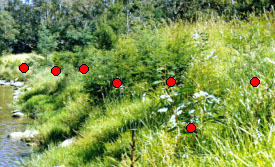
Extensive regeneration in healthy condition along the face of the bank. A few species present.

Greater than 5% cover on bar of regeneration in healthy condition.

Extensive healthy regeneration along the face of the bank.
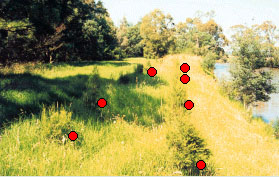
Two rows of healthy swamp paperbark planted along a bank.
Figure 5.15. Examples of regeneration of indigenous woody vegetation for three categories: a) abundant and healthy, b) present and c) very limited. Dots show the regeneration of native woody vegetation. Examples are taken from Ladson and White (1999) and are reproduced with kind permission of the Department of Natural Resources and Environment, Victoria.
b. Present
  
|
 |
c. Very limited regeneration
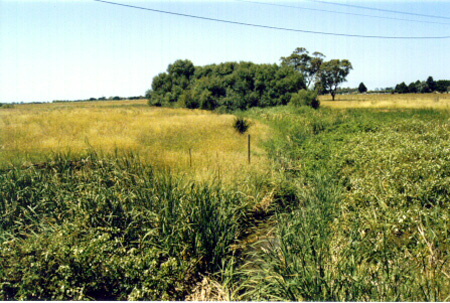
This land grazed to the edge of the stream and there is no regeneration of indigenous woody vegetation.
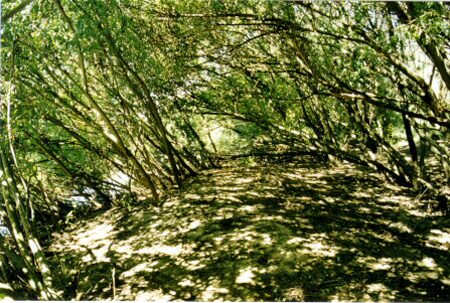
No native regeneration is present under these willows.

This land is also grazed to the edge of the stream and there is no regeneration.
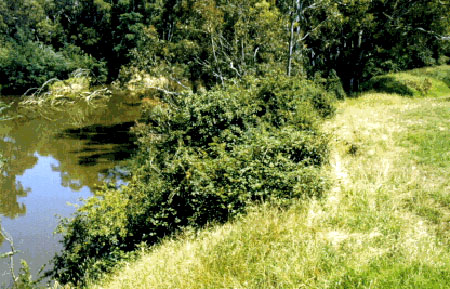
Infestation of exotic woody vegetation (blackberry gorse). No native regeneration.